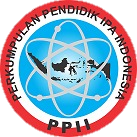The Implementation of Protein Metabolism E-Modules in Biochemistry Learning to Increase Students’ Critical Thinking Skills
DOI:
https://doi.org/10.15575/jtk.v7i1.9991Keywords:
biochemistry, electronic module, protein metabolismAbstract
Appropriate media and learning resources can optimize learning innovations in the 21st century. The use of technology has become an efficient alternative in the implementation of learning. This research aims to implement the protein metabolism electronic modules (e-modules) as biochemistry teaching materials to improve students’ critical thinking (CT) skills. This research refers to comparative quantitative nonparametric methods by comparing measurements of CT skills before applying e-modules during the lesson with the height of CT skills after using the e-module. The e-modules include videos, images, animations, links to various primary sources, and formative tests that follow the learning outcomes. As the result, the advancement of CT skills from the final measurements illustrated a reduction in the number of students categorized as bad and poor and an increasing number of students categorized as good and excellent. Furthermore, the skill improvement can also be seen through the Two Tail T-Test, with a tcount of 4.7752, while the ttable value for the Two Tail T-Test of 2.0262. Since tcount > ttable suggests a significant difference between the initial and final measurement scores test, H0 is rejected, and H1 is accepted. This research concludes that there is an increase in students' CT skills after participating in biochemistry learning using this protein metabolism e-module.
References
Arsyad, A. (2013). Media pembelajaran. Jakarta: Rajawali Grafindo Persada.
Bybee, R. W., Taylor, J. A., Gardner, A., Van Scotter, P., Powell, J. C., Westbrook, A., & Landes, N. (2006). The BSCS 5E instructional model: Origins and effectiveness. Colorado Springs: BSCS. Retrieved from https://bscs.org/reports/the-bscs-5e-instructional-model-origins-and-effectiveness/
Childs, P. E., Hayes, S. M., O’dwyer, A. (2015). Chemistry and everyday life: Relating secondary school chemistry to the current and future lives of students. In Eilks, I., Hofstein, A. (Eds.), Relevant Chemistry Education. SensePublishers, Rotterdam. https://doi.org/10.1007/978-94-6300-175-5_3
Dwiyogo, W. D. (2013). Media Pembelajaran. Malang: Wineka media.
Faizin, Jufri, A. W., & Jamaluddin. (2018). 5E learning cycle model to improve students’ scientific attitude, IOSR Journal of Research & Method in Education, 8(3), 1–3. Retrieved from https://www.iosrjournals.org/iosr-jrme/papers/Vol-8%20Issue-3/Version-1/A0803010103.pdf
Griffin, P., McGaw, B., & Care, E. (2012). Assessment and teaching of 21st century skills. Netherlands: Springer Dordrecht. https://doi.org/10.1007/978-94-017-9395-7
Irwansyah, F. S., Lubab, I., Farida, I., & Ramdhani, M. A. (2017). Designing interactive electronic module in chemistry lessons. Journal of Physics: Conference Series, 895, 012009. https://doi.org/10.1088/1742-6596/895/1/012009
Saleh, M., Prahmana, R. C. I., Isa, M., & Murni (2018). Improving the reasoning ability of elementary school student through the Indonesian realistic mathematics education. Journal on Mathematics Education, 9(1), 41–54. https://doi.org/10.22342/jme.9.1.5049.41-54
Sugiyono. (2012). Metode penelitian bisnis. Bandung: Alfabeta.
Trilling, B., & Fadel, C. (2009). 21st century skills: Learning for life in our times. San Francisco: John Wiley & Sons, Inc. Retrieved from https://www.wiley.com/en-us/21st+Century+Skills%3A+Learning+for+Life+in+Our+Times-p-9780470553916
Ulaş, A. H., Sevim, O., & Tan, E. (2012). The effect of worksheet based upon 5e learning cycle model on student success in teaching of adjectives as grammatical componen. Procedia - Social and Behavioral Sciences, 31, 391–398. https://doi.org/10.1016/j.sbspro.2011.12.072
Downloads
Published
Issue
Section
License
Authors who publish with this journal agree to the following terms:
- Authors retain copyright and grant the journal right of first publication with the work simultaneously licensed under a  Creative Commons Attribution-ShareAlike that allows others to share the work with an acknowledgement of the work's authorship and initial publication in this journal.
- Authors are able to enter into separate, additional contractual arrangements for the non-exclusive distribution of the journal's published version of the work (e.g., post it to an institutional repository or publish it in a book), with an acknowledgement of its initial publication in this journal.
- Authors are permitted and encouraged to post their work online (e.g., in institutional repositories or on their website) prior to and during the submission process, as it can lead to productive exchanges, as well as earlier and greater citation of published work (See The Effect of Open Access).








